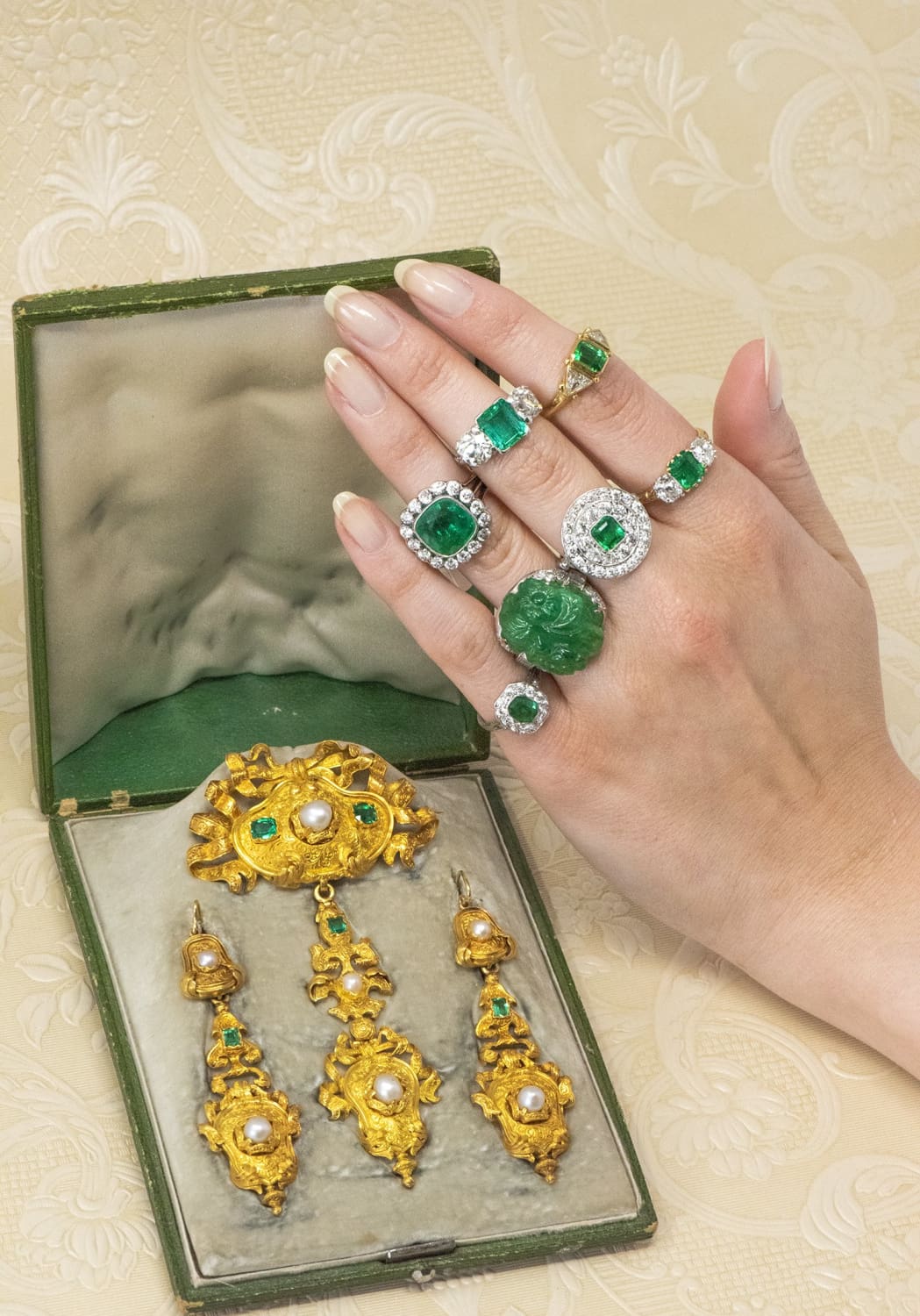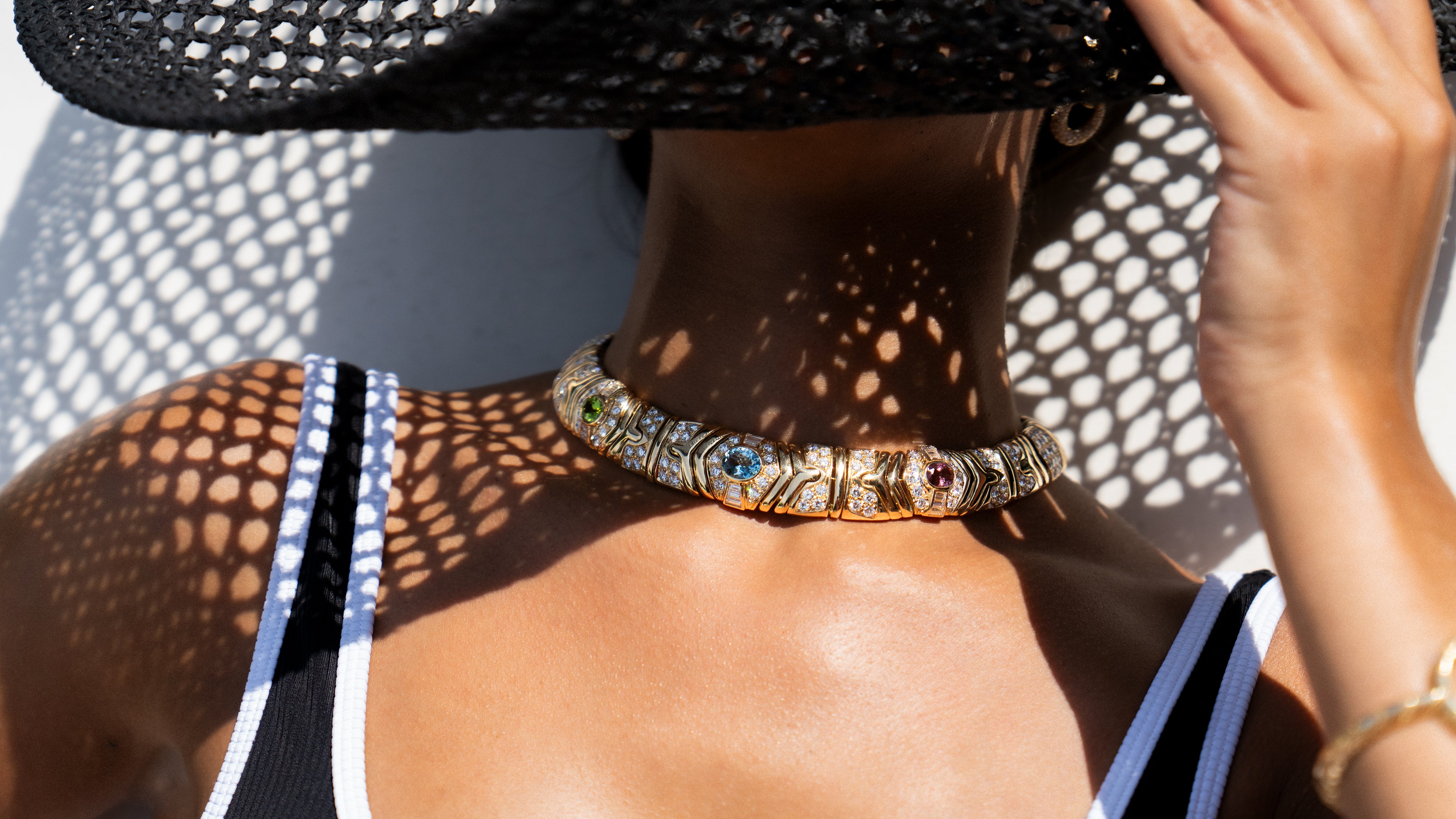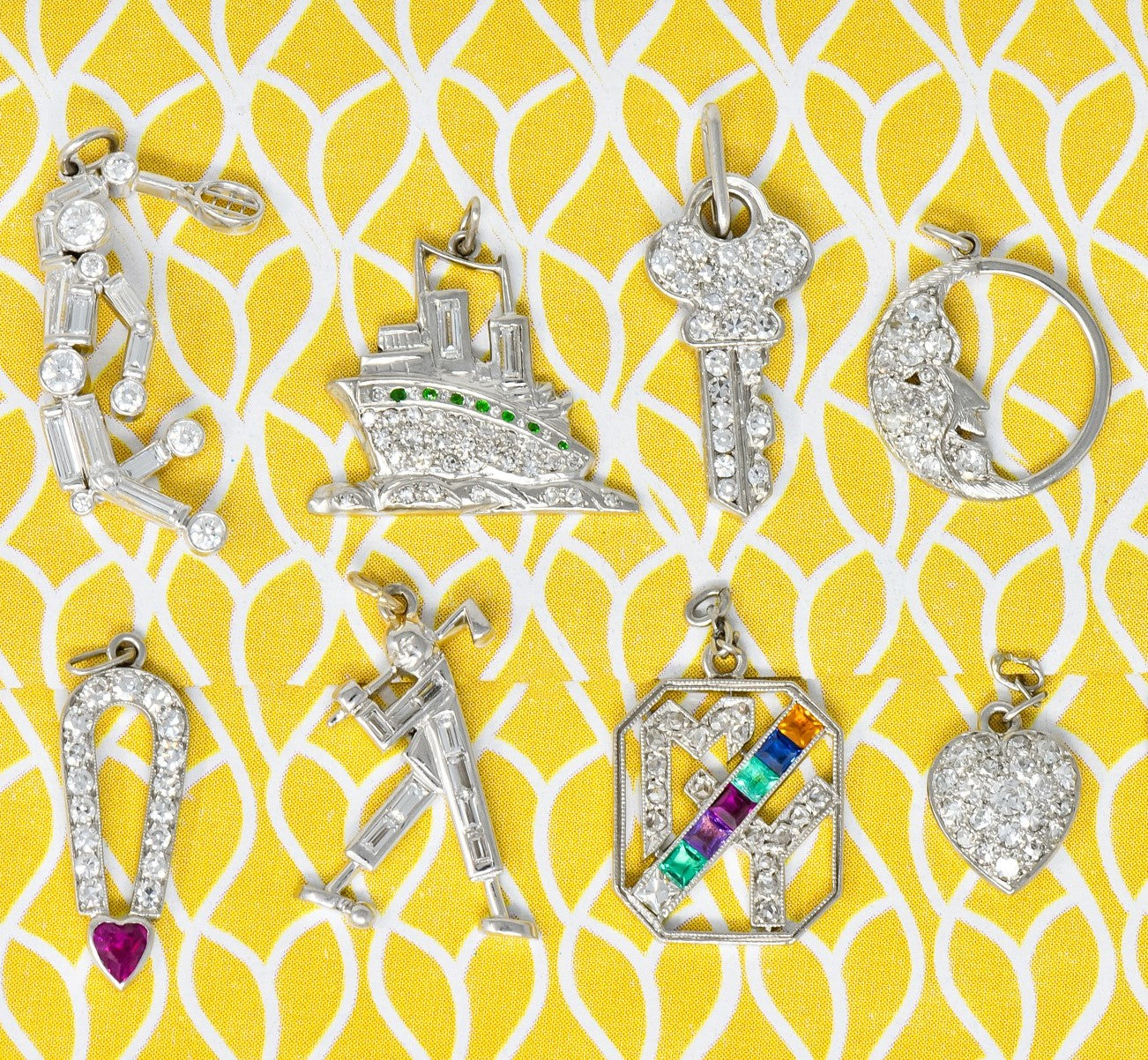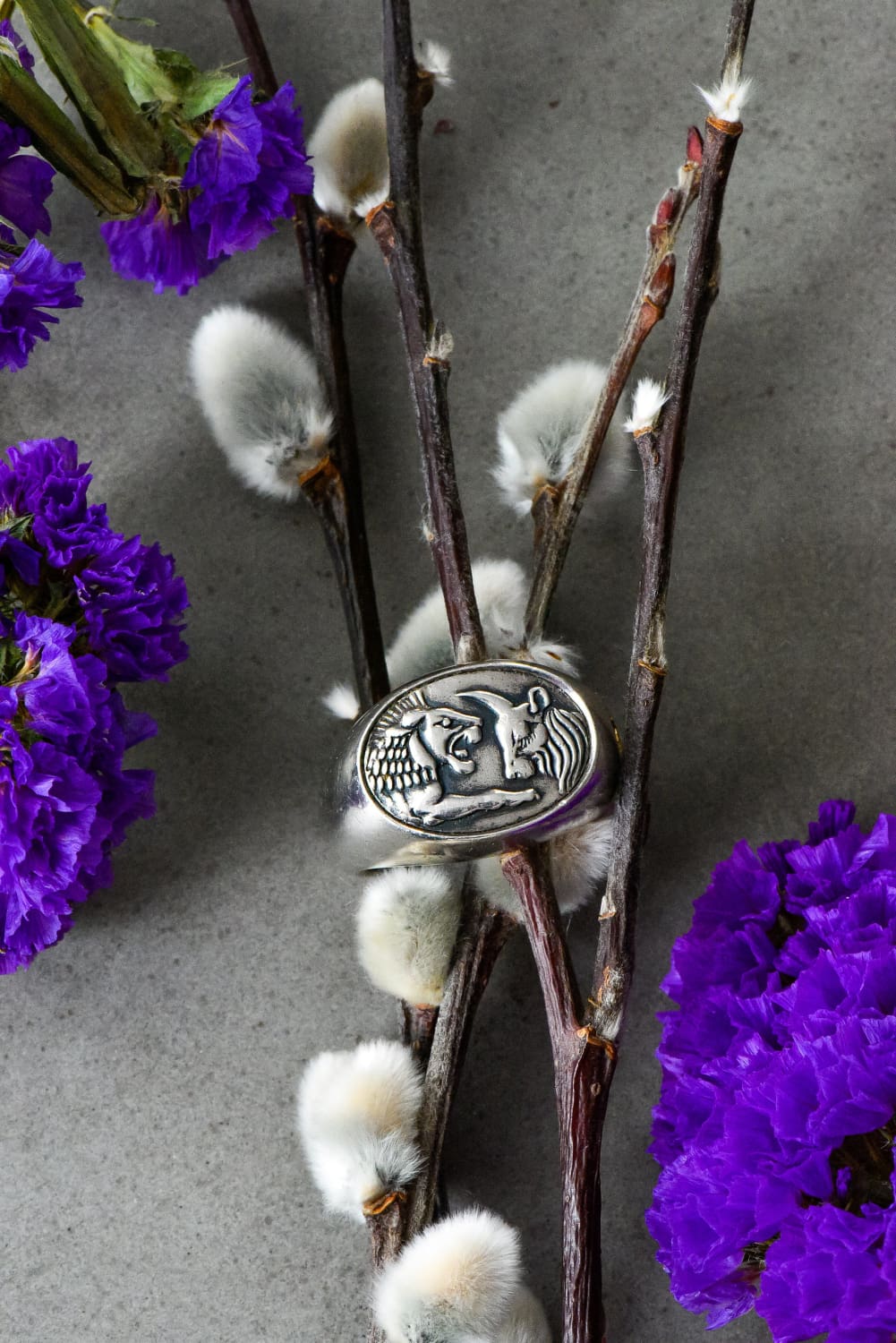
Emerald - May's Birthstone
May's birthstone is compellingly vibrant. When worn, it practically glows with captured light to broadcast its rich hue as it emboldens the adorned. This lush viridian gemstone invokes feelings of vitality and power, making it the perfect specimen for royal and couture jewels.
The emerald is the bluish green to green variety of the mineral beryl. This gem is unique when compared to other members of the beryl family because of its distinct internal characteristics. Emeralds are known to have incredibly fascinating two-phase and three-phase inclusions. These defining traits are open cavities within the stone that are sometimes filled with liquid. This liquid could potentially have a tiny gas bubble that can be rocked back and forth, floating enigmatically within the mineral.
The emerald is the bluish green to green variety of the mineral beryl. This gem is unique when compared to other members of the beryl family because of its distinct internal characteristics. Emeralds are known to have incredibly fascinating two-phase and three-phase inclusions. These defining traits are open cavities within the stone that are sometimes filled with liquid. This liquid could potentially have a tiny gas bubble that can be rocked back and forth, floating enigmatically within the mineral.

These particular habits are diagnostic for emeralds from Colombia, the most desired origin for this jewel because of the prized coloring. When looking at a Colombian example of an emerald, you are instantly mesmerized by the internal feathering dancing within the sumptuous, verdant color. Colombian emeralds are so tantalizing that they have been known to outprice diamonds at auctions.
The need to conquer the emerald's enthralling nature arose in the sixteenth century. Previously, the crystal was fashioned as a cabochon cut which could not truly illustrate its color and inclusions to the fullest extent. So, the emerald cut was developed specifically for this mineral to have a large table to display color. The rectangular stepping was incorporated to alleviate the pressure of emerald's natural fissuring to prevent breakage during cutting.
The need to conquer the emerald's enthralling nature arose in the sixteenth century. Previously, the crystal was fashioned as a cabochon cut which could not truly illustrate its color and inclusions to the fullest extent. So, the emerald cut was developed specifically for this mineral to have a large table to display color. The rectangular stepping was incorporated to alleviate the pressure of emerald's natural fissuring to prevent breakage during cutting.

Thanks to the emerald cut, the stone surged in popularity during the Art Deco era since it complimented the symmetrical designs of the time. Its influence continued to reign well into the Retro age as gemology became more refined, allowing people to understand and appreciate the rarity of the stone and its nuances.
Historically, emeralds were favorites of Cleopatra's as well as Queen Victoria. Often, used in the most grandiose jewelry, the emerald exemplifies sovereignty and brings decisiveness to its wearer.
Take a look here at our collection of emerald estate jewelry.
Historically, emeralds were favorites of Cleopatra's as well as Queen Victoria. Often, used in the most grandiose jewelry, the emerald exemplifies sovereignty and brings decisiveness to its wearer.
Take a look here at our collection of emerald estate jewelry.



Leave a comment
This site is protected by hCaptcha and the hCaptcha Privacy Policy and Terms of Service apply.